May 15, 2025 | 13:04 GMT +7
May 15, 2025 | 13:04 GMT +7
Hotline: 0913.378.918
May 15, 2025 | 13:04 GMT +7
Hotline: 0913.378.918
As the capital of cassava of Vietnam, Tay Ninh has made a great effort to research new cassava varieties. Despite the success in developing mosaic disease-resistant varieties, local farmers have remained waiting for the availability of these varieties because of limited supply.
In Tay Ninh, cassava farmers have finished harvesting the 2021 cassava crop. They are preparing for a new growing season. In Tan Chau district, farmers are struggling to find disease-resistant cassava varieties for planting.
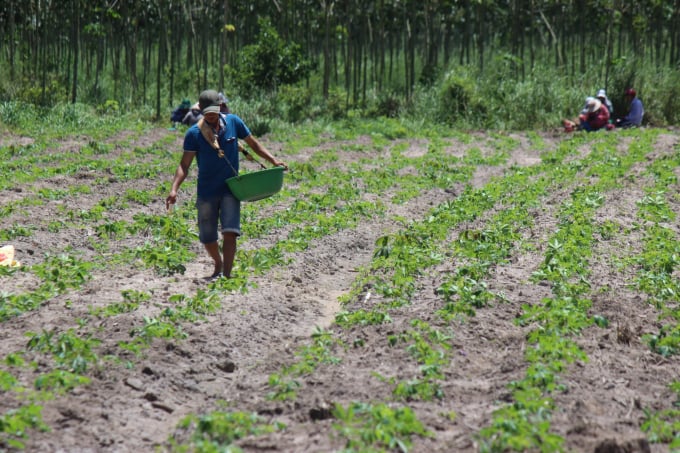
Tay Ninh's cassava farmers are actively preparing for a new planting season. Photo: Tran Trung.
Tran Van Thanh has planted cassava for more than 20 years in Thanh Hung village, Thanh Dong commune (Tan Chau district). Thanh said the farmers here used to plant traditional cassava varieties yielding at least 50 tons per hectare. Since the cassava mosaic disease broke out the productivity has dropped sharply to 25-28 tons per hectare. Besides, starch content in cassava roots was decreased by 5-7 points, making things difficult for local farmers.
To deal with the outbreak of the disease, in addition to changing farming methods, the local farmers have tried to find new varieties for cultivation. However, it's a long arduous journey.
Tran Van Thanh said recently he has heard that the KM505 variety could be resistant to the mosaic disease and high-yielding. To obtain the variety he had to wait and buy at the price even two times as high as the indigenous varieties. Instead of VND20,000 per bundle he had to pay over VND35,000 per bundle. On average, a bundle contained 180 cuttings. For the seed alone, it costed him up to VND5 million per hectare while it was not guaranteed that the variety was resistant to the cassava mosaic disease.
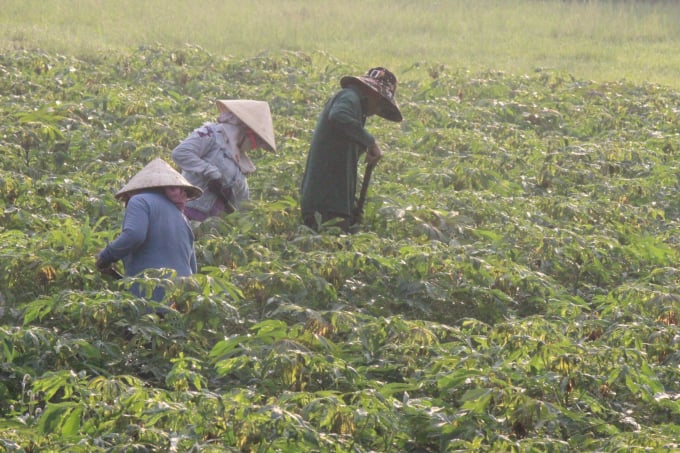
Most of cassavas grown in Tay Ninh have been ravaged by the mosaic disease to some extent. Photo: Tran Trung.
Thanks to favorable weather conditions and good farming practices, the yield still reached 35-40 tons per hectare with starch content of 27-29/30. If in the past, cassava price was around VND2,500 per kilo, in the last cropping season, the prices was rebounded to VND3,300-3,500 per kilo. After deducting all expenses Thanh could earn over VND40 million per hectare.
Despite the recommendation by the competent authorities for regularly changing varieties to save costs Thanh remained using the old variety of KM 505 for this crop.
Currently, his cassava crop has entered the fourth month however most of his cassava plants are infected with the mosaic virus at the rate of around 30%. To make good of the damage, he planned to replant the field as he knew that the mosaic-resistant HN3 and HN5 varieties have been developed successfully. However, he moved heaven and earth, even contacted the local authorities he couldn’t access the seed resources.
“To solve the immediate problem, on one hand I still comply with technical procedures to maintain production in the hope that our plants will overcome the attack of the disease, sustain the productivity and starch content. We hope the disease-free cassava varieties will be available soon so that we can be relieved,” said Tran Van Thanh.
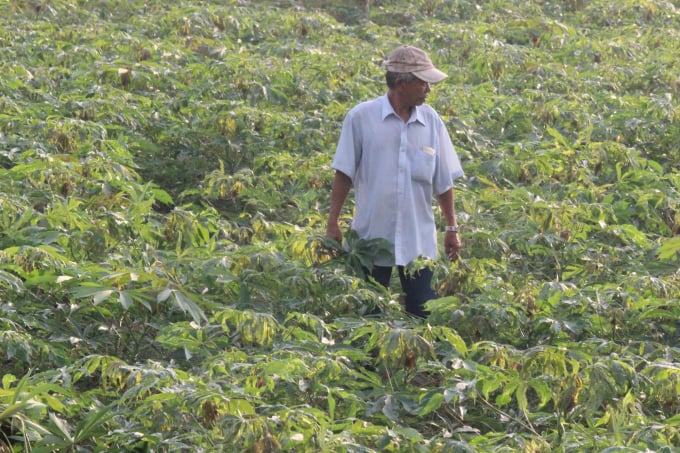
Cassava farmers in Tay Ninh accept risks when they choose old varieties because they can’t access disease-resistant ones. Photo: Tran Trung.
Likewise, Tran Minh Kha living nearby is struggling with his three hectares of cassava because of the mosaic disease. According to Kha, despite the ravage of the disease cassava has remained a major crop in the area because of the higher income from other crops like sugarcane, corn.
“My wife and I have invested VND14-16 million per hectare for plowing, fertilizer, seedlings and labor. Now, the vast majority of the area is infected with the mosaic virus. The local authorities advised us to eliminate all disease-infected plants. If there is no choice I will have to do so,” Kha said sadly.
According to Nguyen Tien Minh, Vice Chairman of the People’s Committee of Thanh Dong commune (Chau Thanh district), Thanh Dong was a purely agricultural commune and cassava was a major crop planted on over 50% of the commune’s farming area. In the last four years, all cassava-growing areas here were infected with the mosaic virus with increased severity of the disease. The local authorities have travelled uphill and down dale to other provinces like Binh Phuoc and Ninh Thuan to learn from their experience. However these provinces were helpless in the face of the mosaic disease.
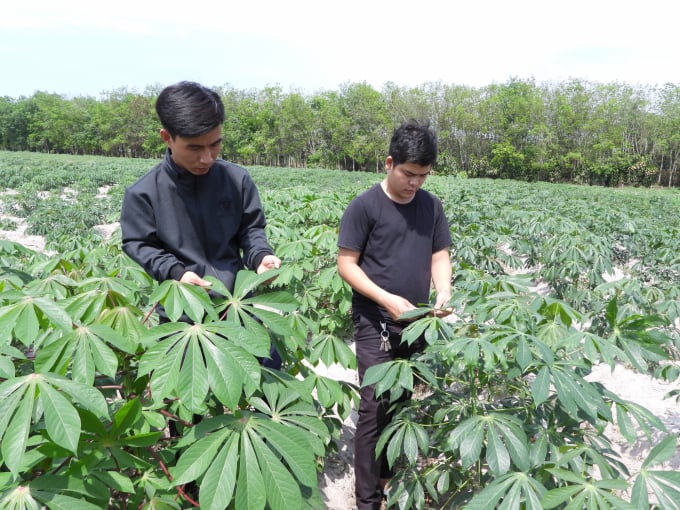
The testing area of HN3 and HN5 varieties and the control variety is established by Tay Ninh’s Center for Agricultural Extension and the relevant agencies. Photo: Tran Trung.
“After knowing about HN3 and HN5 cassava varieties, cassava farmers from all corners of the country contacted us as well as came here to learn about these varieties. However we couldn’t say anything. We hope that the disease –free cassava varieties will be soon available so that farmers in Thanh Dong in particular and in Tay Ninh in general are no longer worried about the disease,” Minh said.
Tay Ninh is the second largest cassava grower of Vietnam. According to the statistics, the province had 46,890 hectares under cassava cultivation of which nearly 43,000 hectares or 90% of the province’s cassava growing area were infected with the mosaic virus. Despite great effort in researching and breeding to develop new disease –resistant varieties with HN3 and HN5 approved by the Ministry of Agriculture and Rural Development (MARD), most of the cassava farmers in Tay Ninh have not accessed to the new varieties and remained living with the cassava mosaic disease.

Despite being approved the progress of the production of HN3 and HN5 varieties can’t meet demand. Photo: Tran Trung.
Regarding the issue, Nguyen Van Hong, Deputy Head of the Sub-Department of Plant Production and Protection of Tay Ninh province, acknowledged the HN3 and HN5 varieties have been extremely in short supply.
“In the past as the mosaic disease broke out we tried our best to prevent the disease. However we failed to control the spread. In theory, farmers can keep their plants as cuttings for the next crop. Now, we have developed the new varieties. I think in addition to reviewing farming process we need to push up propaganda work so that farmers are aware of the importance of changing varieties and choose promising ones. Farmers can exchange good varieties with each other to avoid variety degradation,” said Nguyen Dinh Xuan, Head of Tay Ninh’s Department of Agriculture and Rural Development.
Regarding price, the two new cassava varieties are now sold for the prices 2-3 times higher than other varieties. However it is still at acceptable levels. On average, a bundle of HN3 or HN5 seed cassava containing 200 cuttings is now sold for VND50,000. The price is expected to lower year by year when these varieties are widely planted.
The Department of Agriculture and Rural Development of Tay Ninh province has asked its affiliated agencies to step up the development and production of the HN3 and HN5 varieties which are resisted to the mosaic virus. The department planned to cultivate these varieties on 50 hectares in 2022 and by 2025 the province will have 30% of cassava area under 100% mosaic disease-resistant varieties,” Nguyen Van Hong said.
Translated by Mai Tham
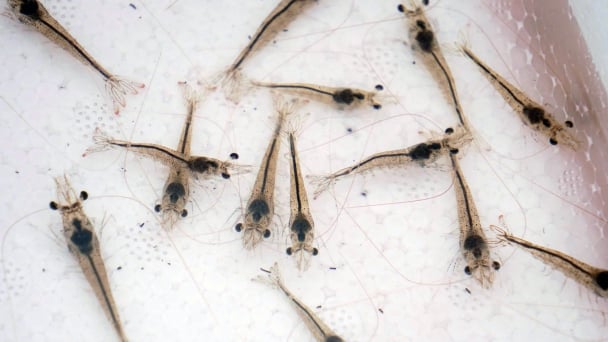
(VAN) Use of high-quality broodstock and biotechnology is regarded as the most effective approach to ensuring sustainable and economically viable shrimp aquaculture ahead of climate change and the emergence of increasingly intricate disease patterns.
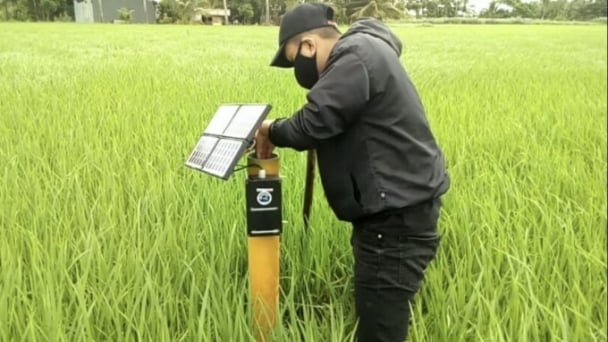
(VAN) Carbon farming is a form of agricultural practices that helps absorb more greenhouse gases than it emits, through smart management of soil, crops, and livestock.
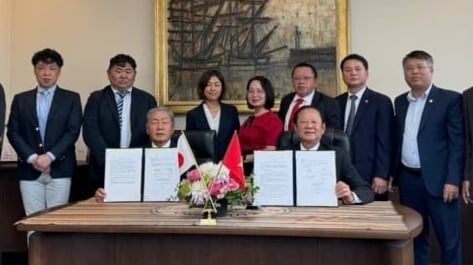
(VAN) This is a key content of the Memorandum of Understanding recently signed between the Vietnam Fisheries Society and Kunihiro Inc of Japan.

(VAN) To achieve the goal, local authorities and businesses in Kon Tum province have fully prepared the necessary conditions for the new Ngoc Linh ginseng planting season.
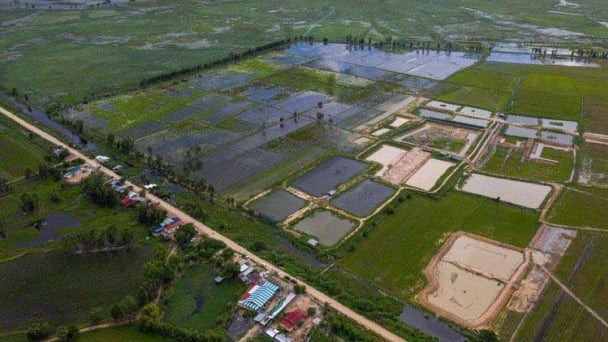
(VAN) Jiangsu province is gearing up to host training programs in Phnom Penh, the capital of Cambodia, this year to establish the Fish and Rice Corridor.
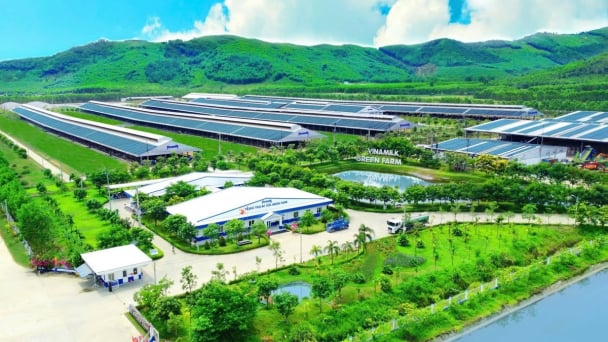
(VAN) Le Hoang Minh, representing Vinamilk, shared the company's experience in energy saving and green energy transition for production at a workshop held during the P4G Summit.
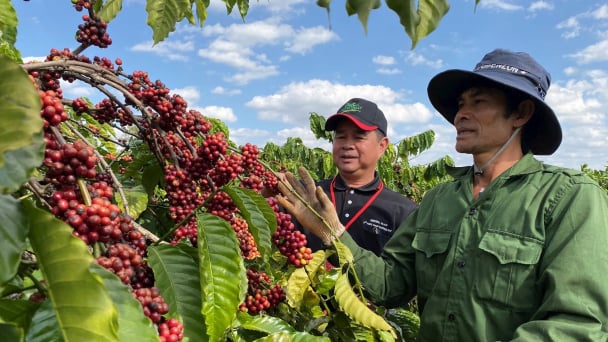
(VAN) Businesses emphasize fairness and equality when integrating social factors into their sustainable development strategies.